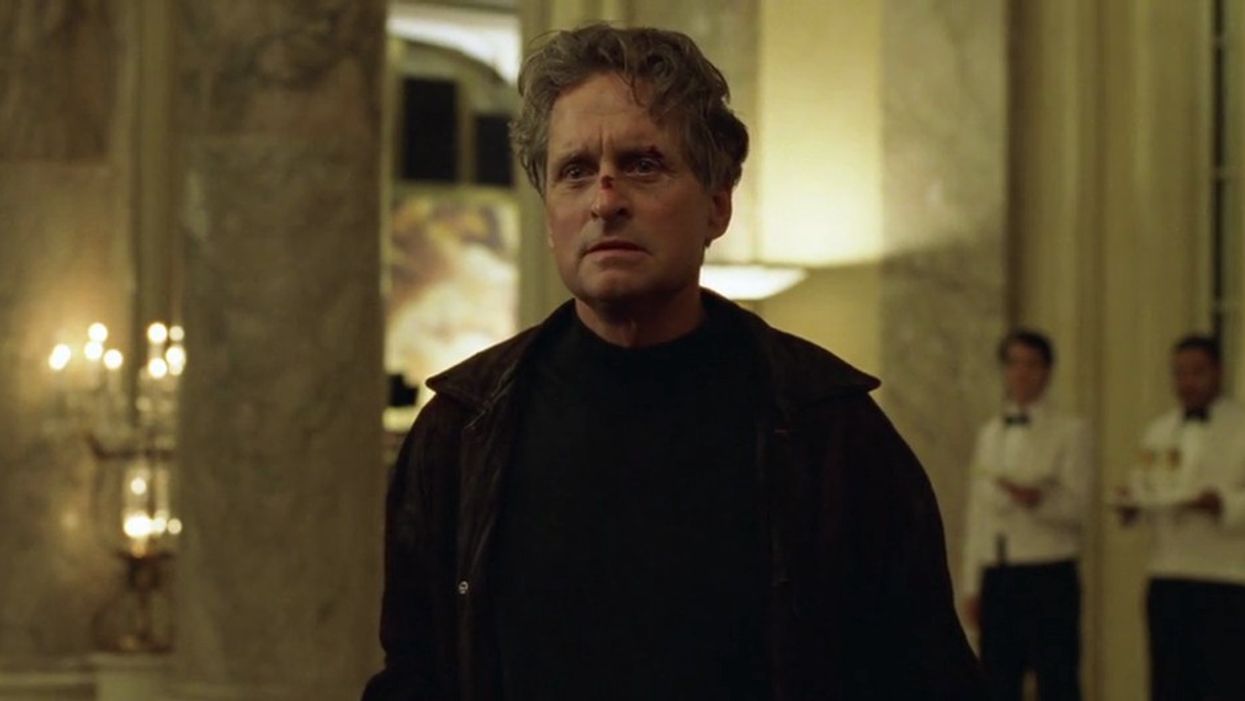Watch: Learn How David Fincher Portrays Loneliness in Film With 'The Game'
Ready Player One?

David Fincher's The Game, released 20 years ago nearly to this day, remains off many viewers' radars. It may have been a little too odd for most people's tastes at its time. It went out on limbs, and took risks in its tale of a wealthy man (Michael Douglas) trapped inside an alternate reality (or is it?) that Fincher's other films have not taken, wandering off down narrative side trails that might tickle some viewers' aesthetics and might cause other viewers to simply give up on the film.
One thing the film does well is demonstrate how loneliness can be constructed in film, which Mr Nerdista explores in his latest video essay. As with all of Fincher's films, the key is in the details, lovingly compiled and deployed towards the building of a cumulative effect. The details swim around the viewer, immersing us to such an extent that you might not notice them. Breaking down Fincher's technique can be highly educational about filmmaking, storytelling (visual and otherwise), and character development.
Isolate through basic geometry
San Francisco, the city in which the story is set, is a wonderland of sharp angles and daunting promontories, and Fincher makes full use of that fact in his composition. For instance, the essayist beautifully explores an opening shot of the film in which we see Douglas's Nicholas Van Orton driving down one of those long, sloping San Francisco hills on his way to work. A couple of points: his car follows the trolley tracks, a set of converging lines which seem directed at him and him alone; and he's also the only car driving in his direction, while there's a long line of cars driving the other way. If you were looking for a visual corollary to the old "character vs. environment" conflict that you learn about when you study plot in literature classes, this would be it.
Block that color palette!
Mr Nerdista points out that, throughout the film, Fincher uses colors to position Nicholas in his world. During one particular lunch scene with Nicholas and his brother Conrad, all we notice in one shot is Conrad's head, so perfectly does the black of his clothing blend with the background. Nicholas, on the other hand, stands out, in his tans and grays, against the darker colors behind him. Fincher uses camera angles to his advantage here as well. We get a close-up of Conrad, and a wide shot of Nicholas, showing him surrounded by human figures, truly "alone in a crowd," as the cliché goes. This is a model of telling a story wordlessly: say what you have to say without dialogue, in the very appearance of a shot, so that whatever takes place within that shot only reinforces your overarching point or message.
Use theme to drive the plot
The most basic facts of the tale Fincher is telling—a lonely man who has few people in his life, is smothered in his own opulence, is too wrapped up in his own affairs to notice others—build the sense of the great loneliness of the protagonist. The film is a great example of a storyline driven towards a single goal, like a heat-seeking missile, which in this case is focused on a character's isolation. The plot events we see here, consisting of Nicholas's deeper and deeper entrapment in "the game," only make him seem more and more isolated. When you construct your own stories, think about how the plot helps to build your theme. It seems obvious to say it, but many films don't do this; instead, they tack a hollow message onto a storyline, almost as an afterthought, when in fact it should be embedded in the story from the very beginning.
What are some of your favorite portrayals of loneliness in film? Let us know in the comments!













